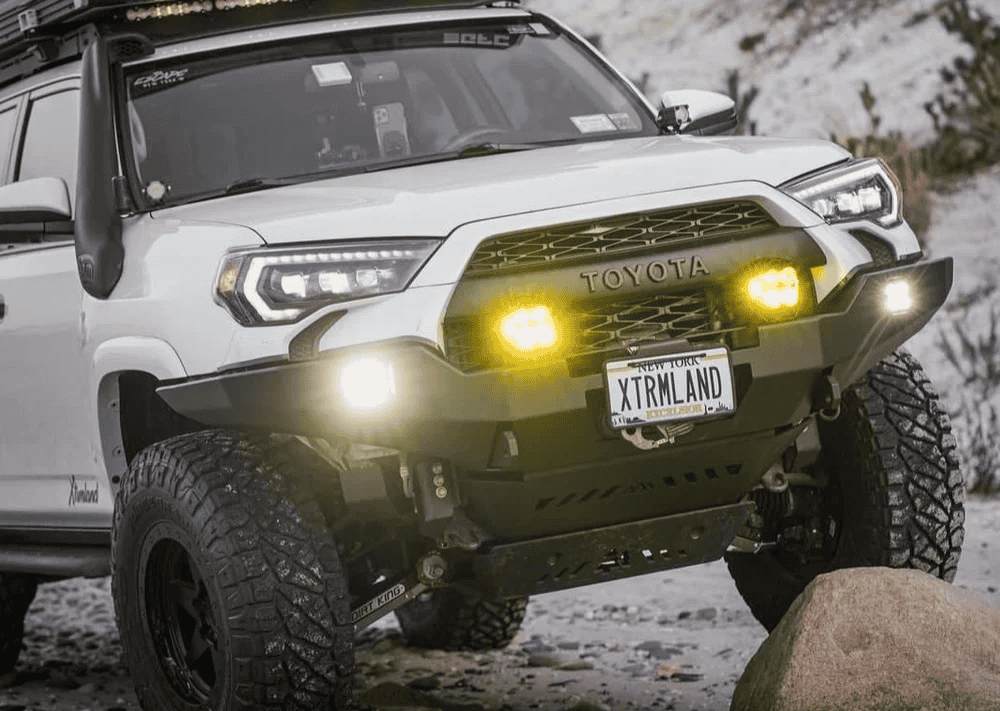Overland Vehicles

Water planning starts with honest math. Most campers need three to four liters per person each day for drinking and cooking, plus extra for dishes and hygiene. The best water storage for camping blends a fixed base supply with a few grab and go vessels. A rugged water container for camping should be food grade, easy to clean, and shaped to pack efficiently. Large water containers camping handle longer routes, while smaller pieces make camp chores faster. The right camping water storage setup keeps weight low, secure, and simple to access.
Daily tasks move smoother with portable water containers for camping. Think sturdy water jugs camping that pour cleanly without splash, and camping drinking water containers you can stash in the shade. The best water jug for camping has a tight cap, a molded handle, and a spout that does not glug. Many campers call a jerry style water container the best camping water container because it fits tight spaces and seats well with straps. For cooking and hand washing, water containers for camping with tap or a compact water dispenser for camping cut down on waste and mess.
If you camp for several days between resupply, step up to camping water storage tanks. A slim camping water tank mounted low and centered keeps your center of gravity predictable. An overland water tank can feed a sink, a spray hose for dishes, or a quick rinse after a ride. Portable water tanks for camping bridge the gap between jugs and fixed plumbing and are helpful in a trailer or truck bed. Even rv water jugs can serve as a modular reserve when you want flexible capacity that you can move between rigs.
Overland water storage adds real mass, so placement matters. Keep weight below the window line, inside the wheelbase, and as close to the centerline as possible. Use rigid mounts for a fixed tank, plus vibration resistant fittings to prevent stress at hose connections. For portable units, use tie downs that resist forward movement under braking and side loads on uneven terrain. Whether you choose a single overland water tank or several water cans for camping, confirm you can remove, refill, and clean each piece without gymnastics.
Aim for clean, one handed dispensing. A small foot pump or twelve volt pump with a simple faucet eliminates heavy lifting. For camp tables, a water carrier camping with a built in spout serves coffee and cooking duty without tipping. In the kitchen, pair a water dispenser for camping with a catch basin to manage splashes. The goal is to reduce handling so the water stays clean from container to cup.
Start with a baseline. Drinking and cooking usually take three to four liters per person daily. Add one to two liters for dish duty and one to two liters for a quick rinse if you carry a spray hose. Pets, altitude, heat, and dusty trails increase needs. If you are water camping on remote routes, carry a margin for an extra day.
Quality matters. Use food grade polyethylene or stainless where it makes sense. Avoid long sun exposure, keep caps clean, and rotate stock. A pre filter combined with a gravity or pump filter can turn clear creek water into a safe reserve if regulations and conditions allow. Chlorine tablets or a measured bleach dose can sanitize a tank when you return home. Label potable and non potable clearly so one container always stays dedicated to drinking.
Organization helps everyone in camp. Keep a small, always ready bottle at the cook station, a mid size carrier for dishes, and a main tank for refills. That mix keeps the heavy lifting rare and shortens the time to a hot meal. When you roll out, secure every water container, check vents and caps, and confirm no line can rub on sharp edges.
Water storage containers camping are not one size fits all. Short weekends thrive with simple jugs and a table tap. Multi day desert crossings ask for a plumbed tank, solid mounts, and a backup jug you can carry to a spigot. When space is tight, collapsible liners can supplement a hard tank for the last miles home.
Now, if you want a setup that feels dialed from day one, you can design it into the vehicle from the start. A fixed fill point outside the body keeps spills off your gear. A quick connect at the rear doors turns cleanup into a two minute task. Mix those details with a smart shelf for your portable units, and both fixed and flexible needs are covered.
When a trip gets longer or the crew grows, you can scale your system. Add a secondary tank for seasonal routes or bring a compact carrier for scouting hikes. That blend keeps you ready for any terrain.
Looking for a system that integrates cleanly with storage, power, and the rest of your build? Explore our Overland rigs to see how a well planned layout supports safe water on real trails. If you need tailored mounting, plumbing, and tap placement, our Custom overland upfit process builds the right capacity into your rig without wasting space. Curious how we approach design and delivery from concept to handoff, and why travelers trust us for long range setups, visit Why choose OZK.
Ready to integrate a safe water system into your rig? Tell us how you travel and how much water you need. OZK designs and installs secure tanks, pumps, and fill points tailored to your route. Start your build plan today.
ADDRESS:
6159 E Huntsville Rd, Fayetteville, AR 72701
PHONE:
(479) 326-9200
EMAIL:
info@ozkvans.com